In your example, we assume no current flows to \$Vout\$, it's only a measurement point. Pretend it's literally just a point floating in space with no connection except to the junction of \$R1\$ and \$R2\$.
Also, the current flows in a loop, by convention (more below) from \$Vin\$, through the two resistors, through ground, then back to whatever is creating \$Vin\$ (a battery, say.) Ground is just a reference to zero volts.
With that out of the way, we know that each resistor has its own voltage drop. The sum of these voltage drops will be \$Vin - GND\$, or just \$Vin\$.
You can also see intuitively that \$Vout\$ will depend on the ratio of the two resistors. If \$R1\$ is equal to \$R2\$, then the proportion of the voltage drop is equal, so \$Vout = Vin/2\$. As \$R2\$ decreases its voltage drop also decreases, while \$R1\$ voltage drop increases.
How do we analyze it? Ohm’s Law, and a couple of other laws.
In a series circuit like this one the current in any part of the circuit is the same. That's Kirchhoff's Current Law, or KCL, as applied for simple current loops.
Kirchhoff's Voltage Law, or KVL, states that all the voltage drops in the circuit must add up to the total voltage. Based on KVL, we know that the sum of the voltage drops of all the elements equals \$Vin\$.
With these tools in hand, let’s get cracking.
We begin by finding the series circuit current using Ohm's Law as:
with total resistance \$R\$ being the sum of \$R1\$ and \$R2\$. We plug those in and solve for \$I\$:
- \$ I = (Vin - 0V) * \frac {1} {R1 + R2} = {Vin} * \frac {1} {R1 + R2}\$
Based on KCL, we know that the current through each resistor is the same:
So we can solve for \$Vout\$ with Ohm's Law again:
We use KCL to substitute the total current \$I\$ for \$I_{R2}\$, and finally calculate \$Vout\$:
- \$ Vout = {I} * {R2} = [Vin * \frac {1} {R1+R2}] * R2\$
or,
- \$ Vout = Vin * \frac {R2} {R1+R2}\$
which you may recognize as the voltage divider equation.
What if some current were to flow into \$Vout\$? We'd modify the equation to reflect that, using a generalization of KCL that states that the currents flowing into a point equals the currents flowing out.
Finally, a word about electron flow and current.
Apropos:

From here: https://xkcd.com/567/
Current flow from positive to negative is called conventional current. Don't worry too much about it, the classical equations like Ohm’s Law, KCL and KVL still work so long as you stick with the, um, convention.
If 'twas guid enough fur James Clerk Maxwell, 'tis guid enough fur ye, laddie.
Here’s another thing to think about. Electrons do ‘flow’ in a circuit, that’s called electron drift. It’s kind of slow, relatively speaking, on the order of cm per second in a conductor like copper. And indeed, they drift from negative to positive.
Related: Does the voltage difference have an effect on the electrons' speed?
We think about electrons when we talk about the atomic theory of materials like batteries, semiconductors and vacuum tubes. That’s the very origin of the term ‘electronics’, a legacy JJ Thomson left us in 1897, some 50 years or so after Maxwell published his unified theory of electromagnetism. Before Thomson, no one really knew what an electron was, let alone its charge.
Charge on the other hand propagates at some significant fraction of the speed of light. Charge is the ‘electro’ side of electromagnetism, and is what we analyze when we’re talking about basic circuits like this.
So from a Maxwell point of view, it’s perfectly valid to say that charge flows from positive to negative, at nearly the speed of light. And it creates a magnetic field as it does so.
So how does charge flow? That’s the realm of quantum mechanics. Look into Feynman diagrams for a gentle, elegant introduction. Try here: https://web.mit.edu/dikaiser/www/FdsAmSci.pdf
 ][1
][1

